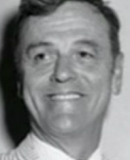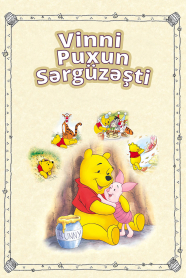
Wolfgang Reitherman
Wolfgang Reitherman
Director, producer
Biography
Wolfgang Reitherman (June 26, 1909 – May 22, 1985), also known and sometimes credited as Woolie Reitherman, was an American animator, director, and producer who was one of Disney's Nine Old Men. Reitherman was hired at Walt Disney Productions on May 21, 1933, and his first project was working as an animator on the Silly Symphonies cartoon, Funny Little Bunnies. Reitherman continued to work on a number of Disney shorts, including The Band Concert, Music Land, and Elmer Elephant. He animated the Slave in the Magic Mirror in Snow White and the Seven Dwarfs (1937). His next assignments was animating Monstro in Pinocchio (1940), the climactic dinosaur fight in Igor Stravinsky's The Rite of Spring in Fantasia (1940), and several scenes of Timothy Q. Mouse in Dumbo (1941). Starting in 1942, Reitherman had left Disney to serve in World War II for the United States Air Force, earning the Distinguished Flying Cross after serving in Africa, China, India and the South Pacific. He was discharged in February 1946 having earned the rank of Major. Reitherman rejoined Disney in April 1947, where he animated the Headless Horseman chase in "The Legend of Sleepy Hollow" section in The Adventures of Ichabod and Mr. Toad (1949). Around this same time, he had claimed he was instrumental in helping Walt Disney commit to producing Cinderella (1950). Reitherman recalled, "I just went in his office which I rarely did, and I said, 'Gee, that looks great. We ought to do do it.' It might have been a little nudge to say, 'Hey, let's get going again and let's do a feature'." On Cinderella, he was the directing animator of the sequence in which Jaq and Gus laboriously push and pull the key up the stairs to Cinderella. On Alice in Wonderland (1951), he animated the scene in which the White Rabbit's home is destroyed by an enlarged Alice. On Peter Pan (1953), he animated the scene of Captain Hook attempting to escape the crocodile. For Lady and the Tramp (1955), Reitherman animated the alley dog fight sequence and Tramp's fight with the rat in the nursery room. Reitherman served as the sequence director of Prince Phillip's climatic fight against Maleficent as a dragon in Sleeping Beauty (1959), and directed the "Twilight Bark" sequence for One Hundred and One Dalmatians (1961). Beginning with The Sword in the Stone (1963), he became the first sole director of a Disney animated feature, which was in direct contrast to having several directors over an animated feature. Animator Ward Kimball had claimed it was because Reitherman's work compatibility and willingness to accept any project "with a smile" while animator Bob Carlson noted that Disney had trusted Reitherman's decision-making before he would embark on a film project. He would continue to direct The Jungle Book (1967), The Aristocats (1970), Robin Hood (1973), and The Rescuers (1977). Additionally, he would direct several animated shorts such as Goliath II (1960) and the first two Winnie the Pooh shorts, Winnie the Pooh and the Honey Tree (1966) and Winnie the Pooh and the Blustery Day (1968), which had won the Academy Award for Best Animated Short Film.
For more information press the link below:
https://en.wikipedia.org/wiki/Wolfgang_Reitherman
For more information press the link below:
https://en.wikipedia.org/wiki/Wolfgang_Reitherman
Filmography
Film Director
Producer
Rəy bildirmək üçün Giriş et və ya Qeydiyyatdan keç
